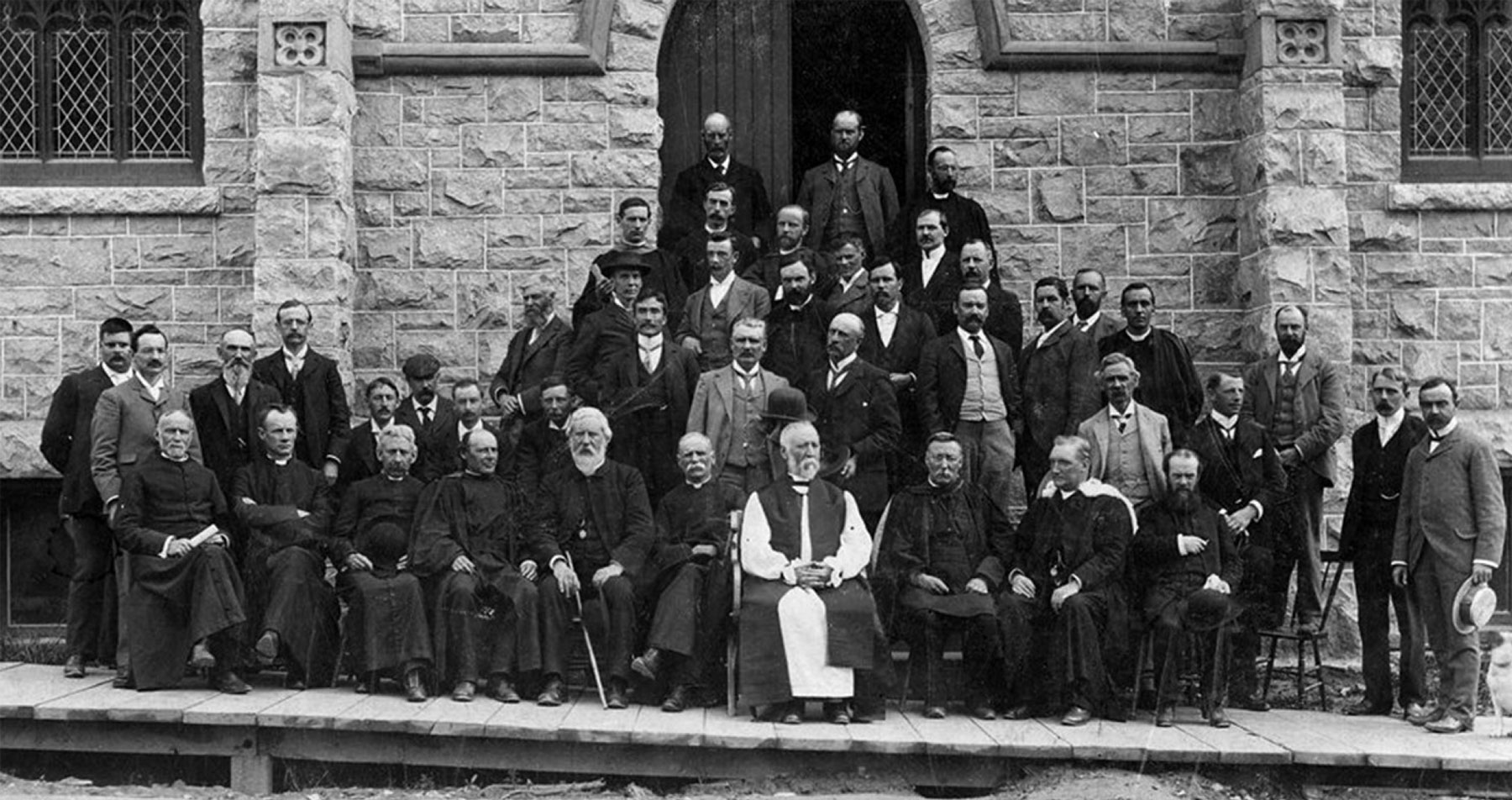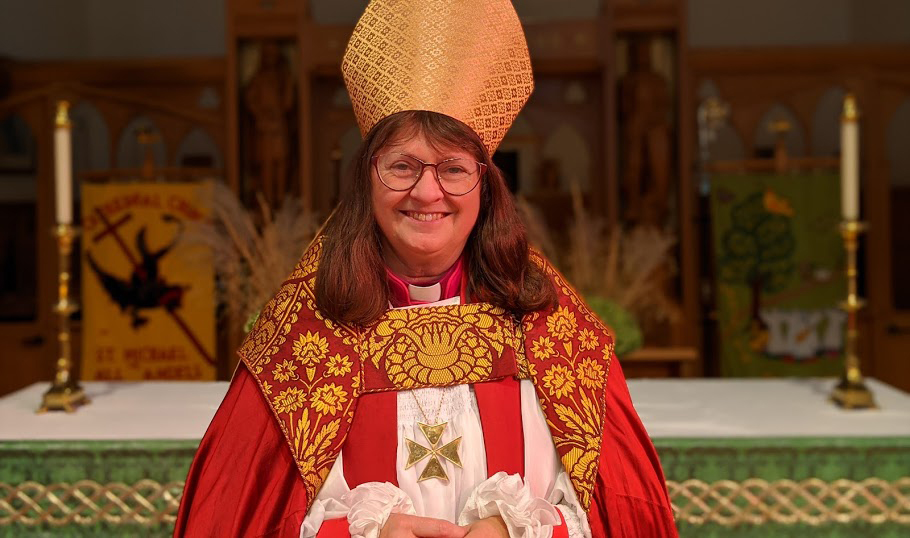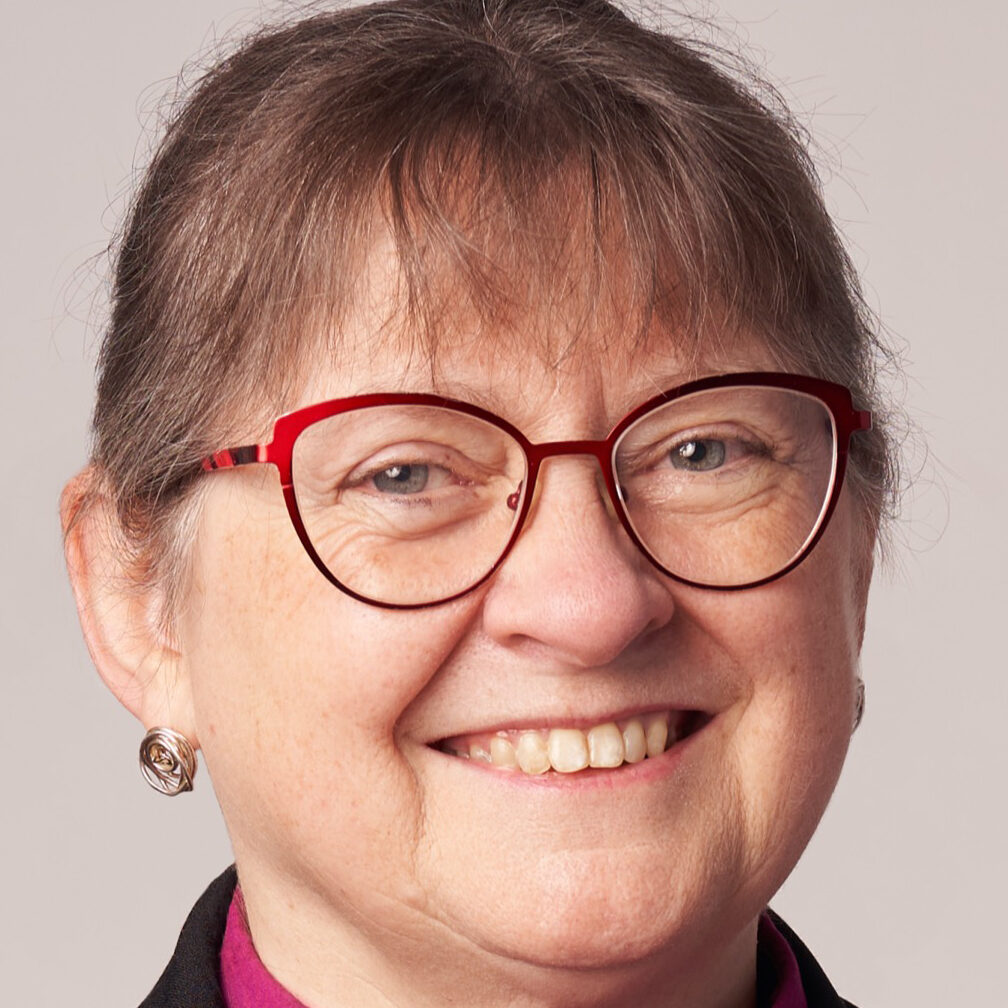The Ascension: A festival day in the Church; an event in the life of Jesus important enough to be named in the historic creeds, because it says something about what Jesus did for us that has meaning for the life of the Church… a fabulous day to begin our Synod and to ponder the meaning of the Ascension for us now as 21st century people of God.
Forty days after Easter ( forty is biblical shorthand for fullness of time, enough time); time for the risen Jesus to be with his disciples preparing them for his leaving them in his bodily form. We get the story in stereophonic surround sound today, both from the end of Luke’s gospel, and the beginning of the book of Acts; same author, told with different emphases in two different contexts. Both books were written to Theopholis, which could be a real person, but in Greek means either “lover of God” or “beloved of God” – addressed to us, the readers.
The Ascension is the ending of the story of Jesus’ life in Luke’s gospel. He commissions the disciples with his mission of reconciliation; tells them to wait in the city and promises they will be clothed with power from on high. He blesses them, and then is carried up into heaven, (symbolically) the realm of God! They worship him ( first time it says that in the gospel, something has changed in their relationship with him, now that he is with God) and it says they are filled with joy! Not bereft or scared or immobilized, but filled with joy! And they are continually blessing God in the temple. The first thing the new church does is gather to wait and to pray; so tonight and through Synod we follow that example of a faithful Church. We gather to wait on God and to pray.
The same Ascension story is told differently at the beginning of the Acts of the Apostles. Again the risen Jesus has been teaching the disciples, and tells them to wait for the promised coming of the Holy Spirit. Here, one of the Disciples asks “is this the time when you will restore all things”? As with the disciples, it is our question too in a time of rapid change and uncertainty. Wouldn’t this be a good time for God’s promises to be fulfilled? We pray daily for God’s kingdom to come. How about now, in a global pandemic?
Remember at the end of the movie ‘Fiddler on the Roof ’ when the Jewish community is being violently forced to leave their village and their country, one of the villagers says “Rabbi, wouldn’t this be a good time for the Messiah to come.” The Rabbi says, “Yes. We’ll just have to wait for him somewhere else.”
Jesus tells the disciples not to be concerned about God’s timing of the kingdom, but to wait for the power of the Holy Spirit to be witnesses to Jesus, beginning here and into ever-widening circles, out to the whole Earth.
Then he is ‘lifted up’ out of their sight. They gaze up where he has gone and two men in white robes (Elijah? Moses? Angels? ) say to the disciples, “Why do you stand looking up toward heaven?” Get to work! Focus on the mission Jesus has given you to do!
Karl Barth, the 20th century theologian, called these days between Ascension and Pentecost a “significant pause” in the life of the Church, waiting and praying, for the coming of the Holy Spirit – to receive power to do their mission. Not passive waiting but praying, preparing, readiness. Waiting here is not languishing; it is active and hopeful, full of expectancy and trust.
In 2007 when I put the word “liminal” in the title of my thesis, I had to explain the word to my thesis advisor. Now because of Covid, everyone has heard it, maybe even overused, “liminal,” in-between time, threshold moment moving into new time, a time of uncertainty. But like Exodus wandering, God is near; it is a thin place where our world and God’s world intersect. There is only a thin veil between Earth and Heaven. We just sang in the Ascension hymn: “thou within the veil has entered.” Ascension is a liminal moment. Uncertainty is often where we are most aware we are in the realm of God’s Spirit. Liminal time is part of readiness and openness to God’s new future.
Jesus’ leaving means he is no longer present in one physical place. The Ascension frees the Spirit of Christ to be available everywhere. The Ascension was necessary for equipping the Church to fulfill its mission. Scary moment for the disciples, to let go of what they knew of relating to Jesus. A mind-blowing change. The presence of Jesus, the Spirit, was no longer spatially limited. (Dare I say that has been a rediscovery due to Covid: gathering community is no longer spatially limited.)
That is where we are in the Church, liminal space, a time of radical change, when what we knew before we cannot go back to. The angels’ question is for us, “Why do you stand looking up toward heaven?”
At this point, in the angels question, I hear God saying, what we took as our theme for this Synod, “Behold, I am doing a new thing.” It is the task of our time to discern what new thing God is up to, and to pray, prepare, move towards God’s future. May we see this time of change in the church as an Ascension moment, a necessary radical shift to equip the church to fulfill its mission in the future: A Time to be Bold.

As we look at the work of this synod, I want to give you a brief outline of the changes in Kootenay since the Synod of 2018.
2018 was Archbishop John’s last Synod, and this is my first. After an interim period between bishops, I was consecrated 2 years ago this week. Since 2018, amongst the 23 paid priests in the Diocese, there have been 6 retirements and 3 clergy moves, another retirement is scheduled shortly. Over a third of the paid clergy of the Diocese have changed in the past 3 years. We have a new dean, David Tiessen, arriving in July, and we will welcome him at this Synod. We wait in Covid to have inductions of several new appointments in congregations. We will welcome these people at Synod. (Missioner in Vahalla Parish, Andrew Stephens-Rennie; Priest incumbent in St. Stephen’s and St. Barbara’s, The Rev. Guna Vaddadi; Priest in St. Mary’s, Sorrento; The Rev. Heather Hamlin Gravells. The Rev. Lori Megley Best as interim at Naramata Community Church; The Rev, Brent Woodard as interim at Windermere Valley Ecumenical Shared Ministry, The Rev. Andrea Brennan appointed as interim to a new Shared Ministry in Fernie.)
As well, there have been significant staff changes, first with the retirement of Bonnie Bailey, long time Finance Manager, and a year later Kathryn Lockhart as Diocesan Administrator, with restructuring of those position to meet changing needs, and expanding electronic capacities.
There was a certain amount of stability before 2018 – or perhaps it just always seems that way when we look back, it appears or feels more stable than it actually was… like those early disciples gazing up into heaven, the past seemed more secure than the unknown future.
Rapid change is not just in our diocese. Over half of bishops in the Canadian Anglican Church are new. It is a difficult time of moving clergy. Across the Canadian church there is a shortage of clergy. Although we are not addressing the issue specifically at this Synod, be assured the ongoing work of equipping ministry needs in the Diocese continues: locally Trained Priests (LTPS), Deacons, Licensed Lay Ministers (LLMS) as well as seminary trained priests. Kootenay School of Ministry is in ‘WE CAN’ (Western Educational Collaborative Anglican Network), becoming part of a wider network of training with training made possible by electronic education. Your work is to listen for your own call to leadership. Your work and mine is to discern and call others into leadership! Jesus, as in our readings tonight, is still calling and preparing disciples to continue his mission.
The last Synod adopted a process for ‘congregational futures’; in the rapid and extensive change since 2018 Synod, Diocesan Council chose to move out of that specific long-term process. With so many retirements and moves, many congregations have already entered into significant discernment about their future and will continue that listening to the Spirit after their leadership appointment begins. With two new Ecumenical Shared ministries, and some changes to less than full time paid ministries, we again need to look at re-configuring how we do ministry in some areas. The buildings in Nakusp, Balfour, and Fruitvale have been sold, but the church doesn’t close. The faithful Christians in those communities are reconfiguring where and how they worship and serve. So, one of the decisions of this Synod will be forming a working group to look at the restructuring that is needed for this new time, to bring proposals before the new Diocesan Council you will elect this weekend.
One important piece of Diocesan work at Synod is, of course, to elect people to the Councils of the Church: Diocesan, Provincial and National – General Synod in 2022.
We give huge thanks for all of those who have faithfully served our Diocese in these capacities in the last three years.
Another piece of our work at this Synod, which has been carefully prepared over the past couple of years with legal expertise and with regional consultation, is a set of canonical revisions to bring our canons in line with our current practice and with other dioceses; to bring more clarity and efficiency.
Also at this synod, we will consider having an annual synod gathering to make us more able to adapt to changing needs. This is now possible with electronic gatherings reducing costs.
The other major piece we consider is to take next steps in exploring one possible new ministry model to supply the needs of parishes in the Kootenays. It is clear that the parish model of one paid priest in one church building is not the way of the future in all cases. The Green Abbey initiative, a proposal for a Christian community in the East Kootenay, with two of our seminary trained clergy offering a hub or centre from which ministry will happen, a hub to supply such things as worship, sacraments, pastoral care, equipping young leadership. This is either a new model, or a very old model. The way the Irish Church was organized for centuries. The Green Abbey will also be a response and a model to equip us for ministry in the biggest emergency of our time – the ecological crisis; offering a model of sustainable community, care of the earth, and food security.
Like those early disciples adjusting to a new way of following Jesus’ call to mission, trusting that God will empower them for their work, we trust God for the courage to discern a new future. “Behold, I am doing a new thing!”
In the fluidity of this time, a long-term strategic plan no longer works. We would like the certainty of that, but that is not to be ours. There is no one-size-fits all solution, only walking into the next steps we discern. We will explore local opportunities with the abundant gifts we have been given.
We now have two generations of clergy and lay people who did not know the church that some of our elders long for. “Why are you gazing up into heaven?” Too often congregational development models have been trying to recapture a past model of parishes when the actual population blip of the sixties is long gone. Our time requires adaptive change, nimble responses to the needs now.
Our mission hasn’t changed. It is God’s mission, as Jesus gave it to those disciples to continue after the Ascension: a ministry of reconciliation, freeing the captives, of feeding the hungry, sheltering the refugee, demonstrating good news to the poor. A ministry of service and love. Much of this ministry is done locally. We listen and interpret that mission in our own time.
The question for each local expression of the body of Christ is “Who is our neighbour?” Then we listen to the needs of that particular neighbour, accessing our gifts and resources.
Some of that listening to neighbour is done at diocesan level, some at the national – we are stronger as part of a larger Body of Christ; refugee ministry, PWRDF, and equipping leadership are prime examples of more far-reaching, shared mission. We are pleased to have Primate Linda Nicholls with us this Synod to speak of what is happening in the wider church.
Beyond the work of this Synod, I will encourage the diocese and each local community to engage in work of dismantling racism: to put in practice our baptismal vow of respecting the dignity of every human being. I also want us all to enter into Interfaith and Ecumenical relationships. In times of change, it is tempting to look inward and concentrate on survival. It is essential to look outward. Research shows that the biggest factor in keeping youth in the church is meaningful interfaith engagement. Youth, and we ourselves, live in a multi-faith world.
Back to our scriptural text… At the Ascension, Jesus entrusts his mission to the fledgling Church. Jesus blesses the disciples. God created the Church, sustains the Church and continues to transform the Church. Therein lies our confidence in the future. Pentecost is not only a past event; God never ceases to renew us with the power of the Holy Spirit.
The good news of being disciples in the context of 2021 is that the faithful God who does new things still equips us with courage and power to live into our mission. May God give us joy in that work. The Spirit of God enables the Church to live “between the times.” We do the work of this Synod with hope because God is calling us from a new future.
Thanks be to God.




